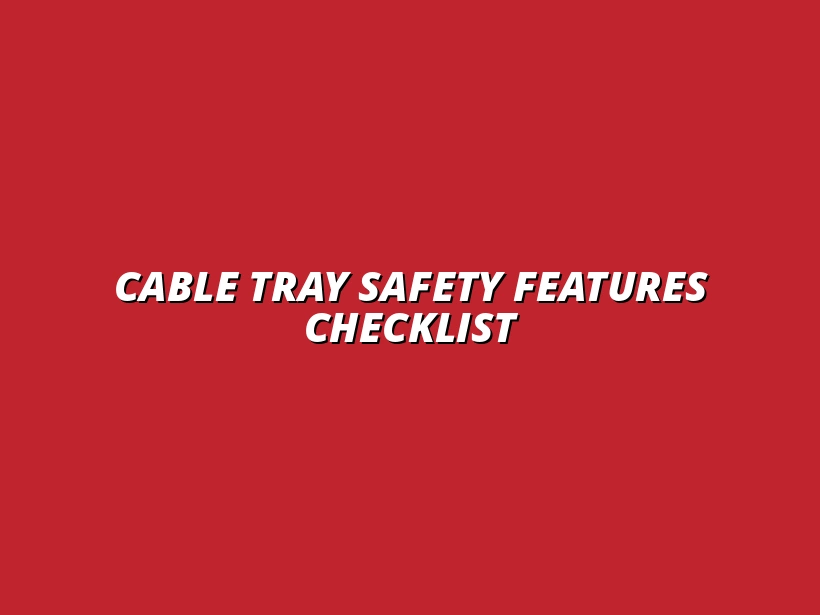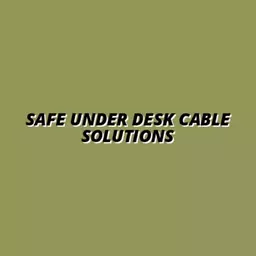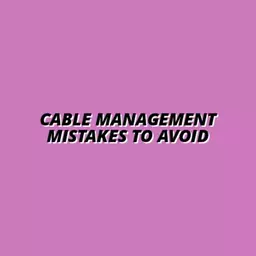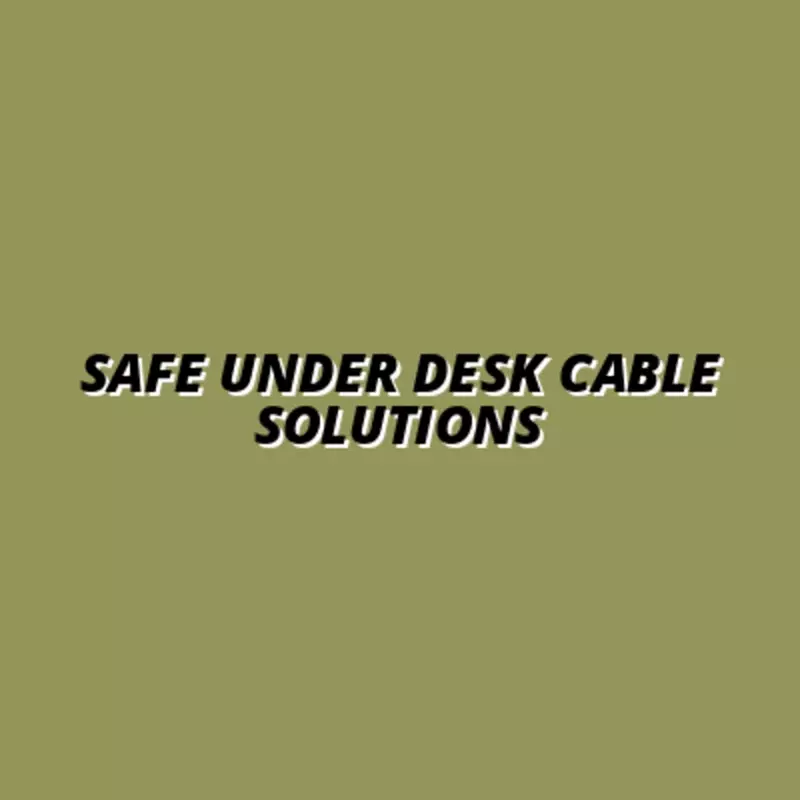
Cable Tray Safety Features Checklist
Did you know that prioritizing cable safety features in your workspace can drastically reduce the risk of accidents and improve overall efficiency? It's a vital aspect often overlooked in office setups, yet it plays a crucial role in ensuring a safe working environment.
What You Will Learn
- The importance of cable tray systems in organizing electrical and data cables to enhance safety and aesthetics.
- How effective cable management reduces the risks of trips, falls, and electrical hazards in the workplace.
- Key safety features to prioritize, such as fire-resistant materials and compliance with OSHA and NEC standards.
- The necessity of regular inspections and maintenance of cable trays to sustain their safety and functionality.
Key Insights on Cable Tray Safety Features
Understanding the essential aspects of cable tray safety features helps create a secure and efficient workspace. Below are several critical insights summarized in a visual format.
Preventing Accidents
Properly managed cables reduce the risk of trips and falls, ensuring a safer working environment.
Electrical Safety
Well-designed cable trays minimize the chance of electrical shorts or fires caused by exposed wires.
Compliance Requirements
Many industry regulations mandate specific safety standards for cable management, protecting your business and employees.
Improves Workspace Aesthetics
Organized cable management enhances the overall appearance of your workspace.
Understanding the Importance of Cable Tray Safety Features
When it comes to setting up a workspace, we often focus on aesthetics and functionality, but one key aspect shouldn't be overlooked: cable tray safety features. These systems are designed to manage and protect electrical cables that run through our offices. Properly implemented, they not only keep our workspaces clean but also significantly enhance safety by minimizing risks associated with electrical hazards and physical damage.
Cable tray systems serve a vital role in workplace safety. They provide a structured way to route electrical and data cables, reducing clutter and the potential for accidents. An organized setup not only improves the overall appearance of your workspace but also promotes efficiency and protects employees from falls, trips, and electrical malfunctions.
When considering cable tray systems, it's important to remember that safe cable tray practices are crucial for preventing accidents and ensuring long-term workplace safety. Cable trays are essential for managing the myriad of cables in any workspace. These trays can come in various styles, including J-channels, raceways, and slide-out trays, each offering unique advantages. Their primary purpose is to organize and secure cables, which helps prevent them from becoming tangled or damaged.
More importantly, cable trays act as a barrier, helping to keep cables away from foot traffic and other hazards. By using cable trays, you create a safer environment for everyone in the office. Imagine not having to worry about accidentally tripping over loose cables—it's a game changer!
💡 Want to master under-desk cable trays? Start with our foundational guide to all things cable management. 👉 Read the Cable Management 101 Guide
- Improves workspace aesthetics
- Reduces the risk of electrical hazards
- Enhances overall efficiency
Key Reasons for Prioritizing Safety in Cable Management Systems
Prioritizing safety in cable management isn't just a good idea—it's essential! Here are a few key reasons why you should consider safety features when selecting cable trays for your workspace.
- Preventing Accidents: Properly managed cables reduce the risk of trips and falls, ensuring a safer working environment.
- Electrical Safety: Well-designed cable trays minimize the chance of electrical shorts or fires caused by exposed wires.
- Compliance Requirements: Many industry regulations mandate specific safety standards for cable management. Adhering to these can protect your business and employees.
At Under-Desk Tray Hub, we believe that a well-organized workspace not only boosts productivity but also ensures that safety remains a top priority. Remember, investing a little time into selecting the right cable management solutions can save you a lot of trouble down the line!
Frequently Asked Questions
- Why are cable tray safety features important?
- Cable tray safety features are essential for managing and protecting electrical cables, reducing the risk of accidents, improving workplace safety, and enhancing overall efficiency.
- What are cable tray systems?
- Cable tray systems are structured ways to route electrical and data cables, reducing clutter and preventing trips, falls, and electrical malfunctions.
- What are the key reasons to prioritize safety in cable management?
- Prioritizing safety in cable management prevents accidents, minimizes electrical hazards, ensures compliance with industry regulations, and protects businesses and employees.
- What materials should I prioritize for cable trays?
- Prioritize fire-resistant materials for cable trays to mitigate fire hazards and ensure proper grounding and bonding to address electrical risks.
- How often should I inspect and maintain cable trays?
- Regular inspections and maintenance of cable trays are crucial for sustaining safety and functionality. Schedule safety audits at least twice a year.
Pro Tip
Did you know? Regularly conducting safety audits of your cable management systems can significantly reduce the risk of accidents. Schedule these audits at least twice a year to ensure all trays are properly secured, cables are organized, and compliance with safety standards is maintained. A proactive approach not only enhances safety but also boosts productivity by minimizing disruptions!
Summarizing Key Insights on Cable Tray Safety Features
As we wrap up our discussion on cable tray safety features, it's essential to highlight the critical aspects that contribute to a secure and efficient workspace. Recognizing the importance of these safety features is the first step in creating an organized and worry-free environment. By focusing on the right materials, designs, and compliance with safety standards, you can significantly reduce risks associated with cable management.
Here are some key takeaways to remember:
- Prioritize fire-resistant materials to mitigate fire hazards.
- Ensure proper grounding and bonding to address electrical risks.
- Familiarize yourself with OSHA standards and NEC guidelines for compliance.
- Regularly inspect and maintain your cable trays to sustain safety.
Final Thoughts on Ensuring Safety in Cable Management
While organizing your workspace, safety should always be at the forefront of your mind. As I often say at Under-Desk Tray Hub, an efficient workspace is a safe workspace! Investing time in understanding and implementing safety features not only protects your equipment but also enhances your productivity. Think about it—when you know your cables are safe and secure, you can focus on what truly matters: your work.
Remember, taking proactive steps to address cable safety is a continuous journey. Always stay informed about the latest safety practices and innovations in cable tray design. A clean and organized under-desk area is more than just a visual benefit; it’s about creating a space that promotes efficiency and reduces hazards. For more on keeping your workspace tidy, check out these workspace cable streamlining tips.
Engaging with Further Resources and Best Practice Guides
To deepen your understanding of cable tray safety, I encourage you to explore a variety of resources available online. Regulatory bodies and industry organizations provide valuable guidelines that can help you stay compliant and informed. Here’s a list of resources you might find useful:
- Occupational Safety and Health Administration (OSHA)
- National Electrical Code (NEC)
- Institute of Electrical and Electronics Engineers (IEEE)
- National Fire Protection Association (NFPA)
These organizations offer best practice guides and updates on safety standards that could greatly influence your cable management strategies. Additionally, understanding how to manage cables for smart lamps can further enhance your workspace organization.
Encouragement to Implement and Review Cable Tray Safety Protocols
As you take steps toward improving your cable management systems, don’t forget to review your safety protocols regularly. Continuous assessment is key to ensuring that your practices align with current standards and innovations. I recommend setting a schedule for routine checks and updates to your cable trays, ensuring they meet both safety and functional requirements.
To further improve your cable management systems, consider exploring under-desk cable safety tips. Incorporating safety features into your workspace isn’t just an obligation; it's an opportunity to create a more productive environment. Let’s not just keep our cables organized; let’s prioritize safety and efficiency together!
Recap of Key Points
Here is a quick recap of the important points discussed in the article:
- Cable tray systems help manage and protect electrical cables, improving workspace safety and aesthetics.
- Prioritize safety features to prevent accidents and minimize electrical hazards.
- Use fire-resistant materials and ensure proper grounding to address safety risks.
- Stay compliant with OSHA standards and NEC guidelines to protect your business and employees.
- Regular inspections and maintenance of cable trays are crucial for sustaining safety.




